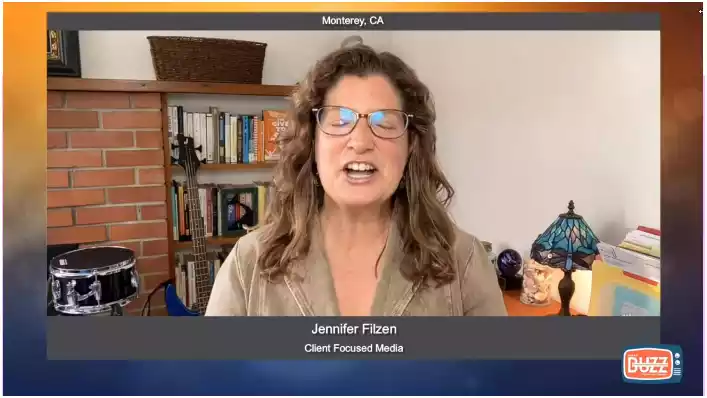Optimized Prior Authorization Strategies: Streamline Approvals!
Unlock the key to hassle-free approvals! Dive into our guide on optimized prior authorization strategies and revolutionize your healthcare workflow today!

Delving into medicaid prior authorization unveils a critical checkpoint in healthcare coverage. This procedure mandates obtaining approval from Medicaid before receiving certain medical services or prescriptions, aiming to ensure treatments are medically necessary and cost-effective.
Unlock the key to Medicaid coverage!
Table of Contents
How Optimized Prior Authorization Strategies Save Time and Costs
Prior Authorization (PA) can be challenging and time-consuming for a lot of medical practices. It’s a tedious process that could lead to lengthy delays or claim rejections.
PA is essential, though, because it ensures that insurance plans cover particular medical services or medications. This blog post will review a few methods for making the PA process more efficient and optimizing your healthcare practice. Read on to discover how you can streamline your PA process and improve your practice’s workflow.
Define Clear Prior Authorization Policies and Procedures: Every PA process should have consistent and comprehensive policies that define the exact requirements, responsibilities, and protocols. Ensure that your practice has clearly defined policies and procedures for PA, such as the required documents, timelines, communication channels with payers, and each team member’s responsibilities. Doing so can minimize any confusion or ambiguity around the PA process. Additionally, it can reduce the likelihood of errors or hold-ups when completing PA requests.
Automate Your Prior Authorization Process: Today, technology can significantly streamline the PA process and make your practice higher efficiency. Consider adopting automated PA solutions to optimize your PA process, such as electronic prior authorization (ePA), which replaces traditional paper-based methods with automated ones. ePA can help you avoid unnecessary follow-up steps with payers, reduce manual errors, and save your practice’s administrative time and resources. Moreover, ePA can provide real-time updates on the status of PA requests, expediting the process and reducing patient wait times.
Engage and Train Your Staff: Your practice’s staff members are essential for optimizing the PA process, and you must ensure they are engaged, informed, and trained. Train your team on the PA process’ policies and procedures and ongoing education to ensure they stay up-to-date on changes to the process. Encourage staff members to routinely make suggestions for improvements, offer feedback, and pose questions. By doing this, your employees can assist in locating bottlenecks and creating ways to enhance the PA procedure. Engaging your team in the process can also increase their efficiency and satisfaction.
Enhance Patient Communication: Prior Authorization is not just an administrative task but an essential part of patient care. Patients deserve to know the status of their authorization, and you can enhance communication abilities to provide a better experience. Establish clear patient communication channels, such as a patient portal, notify them of the PA process requirements, and keep them informed of any updates or changes. Doing so can improve patient satisfaction and avoid any surprises in the process that may lead to complaints or negative patient critique. Additionally, clear communication can help reduce potential misunderstandings or errors in the PA process.
Lastly, it’s critical to continuously measure results and keep an eye on the metrics and success of your PA process. Determine the Key Performance Indicators (KPIs) for your Payroll Administration process, including the approval rate, error rates, response times, and refusal reasons. You may identify areas for improvement and make data-driven decisions about how to best optimize your PA process by routinely evaluating and analyzing these KPIs. You may trace the effects of any modifications or enhancements made to your PA process by keeping an eye on performance and making the required adjustments.
Continuously Improving: Optimizing your prior authorization process is a continuous endeavor that needs constant observation and development. By defining clear policies, automating the process, training your staff, enhancing patient communication, and regularly measuring performance, you can streamline the PA process and improve your practice’s efficiency. Remember to involve all relevant team members in the process and be open to feedback and suggestions for improvement. With a well-optimized PA process, your practice can provide better patient care and reduce administrative burden, increasing productivity and revenue. Stay committed to continuously improving your PA process, and you’ll see its positive impact on your healthcare practice. Keep striving for excellence in managing prior authorizations and providing the best possible care for your patients.
I'm very thankful for Portiva who I know is looking after my practice while I'm gone the virtual assistants can manage prescription refills, documents they can triage patients and just kind of answer administrative questions and they can handle a lot on their own. But also, they're very good about contacting me if there's any emergency or anything I need to attend to. So I'm very thankful for Portiva they can help almost any provider almost anywhere and it really allows for some good work-life balance as I'm getting to experience right now at my family farm so I'm very thankful for Portiva and I'm very happy to use their services"

Board Certified Family Medicine Physician

Portiva's Virtual Medical Assistant - I have all the support I need. There's somebody checking my email, any patient messages. Patients are still able to schedule and handle any scheduling issues and any kind of billing that needs to still go through. Portiva hands handles it all for me. I have support i have somebody that I can access 24/7 pretty much. It's all very seamless. If somebody has an emergency or needs a medication called in. I know that the va's at portiva will handle that for me.

Board Certified Family Medicine Physician

Strategies to optimize process and save time for your staff and patients
Scheduling and managing healthcare resources efficiently is essential to improving patient experiences overall and reducing staff workloads. By using advanced scheduling technologies and electronic health records (EHRs), clinics can significantly reduce wait times and administrative duties. These technologies make it simple for people to book appointments online, and they can lower the percentage of no-shows by using automated reminders. By using these technologies, staff members may ensure that patients are prepared for their upcoming visits and manage patient flow more effectively.
Therefore, streamlining these procedures results in better patient and healthcare professional satisfaction, decreased operating costs, and more focused patient care.
Additionally, delegating particular tasks to other team members and utilizing virtual assistants can alleviate the staff’s workload and give them more time to focus on patients. By continuously seeking ways to improve scheduling and management processes, healthcare clinics can enhance their overall operations and deliver better care for their patients.
Thus, constantly reviewing and adapting strategies is crucial in optimizing this process and saving time for everyone involved. So, to enhance your clinic’s efficiency, consider investing in advanced technologies and incorporating delegation methods to optimize scheduling and management processes. These efforts will save time and contribute to a more positive healthcare experience for staff and patients.
Additionally, implementing strategies such as telemedicine can further improve the efficiency of healthcare scheduling. This technology allows for virtual appointments and consultations, saving patients and staff the time and effort of traveling to in-person appointments. It also opens up opportunities for remote patient monitoring, reducing the need for frequent in-person check-ins.
By utilizing telemedicine, healthcare clinics can optimize their scheduling processes even further, providing convenience and accessibility for patients while streamlining operations for staff. Overall, continuously seeking out and implementing new strategies to optimize healthcare scheduling can greatly benefit patients and staff, creating a more efficient and effective healthcare system. This saves time and ultimately improves the overall quality of care provided.
So, if you’re looking for ways to enhance your clinic’s efficiency, explore various options and continuously evaluate and adapt your processes to find the best solutions for your specific needs. The goal is to create a seamless and efficient scheduling process that benefits everyone involved in the healthcare journey. So, keep exploring and optimizing, and you’ll see its positive impact on your clinic’s operations and patient satisfaction. With continuous improvement, the possibilities for enhancing healthcare scheduling processes are endless.
Conclusion:
Prior authorization process optimization has major advantages for patients, payers, and your medical practice. You may streamline the PA process and increase practice efficiency by creating clear policies and procedures, automating your PA process, providing staff training, improving patient communication, and keeping an eye on performance and metrics. By doing this, you’ll guarantee greater results for your practice, lower administrative hassles, and increase patient happiness. Take action today and optimize your PA process for a better patient and practice experience.
To learn more about prescription authorization that can enhance your medical practice. Discover more about Portiva and unlock a world of possibilities by visiting our homepage today!
- Prior authorization support
- Why prior authorization training is crucial in healthcare
- The advantages of prior authorization support
- Maximizing prior authorization
- Prior authorization policy changes
- How outsourcing preauthorization works
- Solutions to precertification challenges
- Prior authorization services
- Prior authorization cost-benefit
- Prior authorization and patient care
- Prior authorization workflow efficiency
- Prior authorization in patient access services
- The impact of precertification services
- Reducing preauthorization costs
- Prior authorization challenges
- Obtaining prior authorization with ease
- Eliminate precertification denials
- Prior authorization guide
- Importance of prior authorization training




